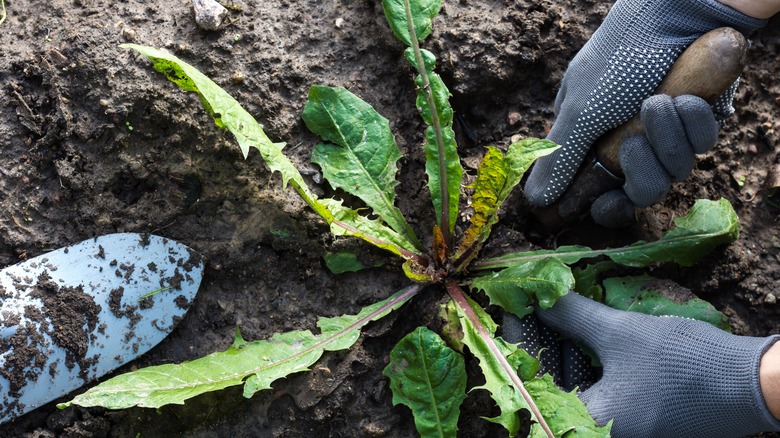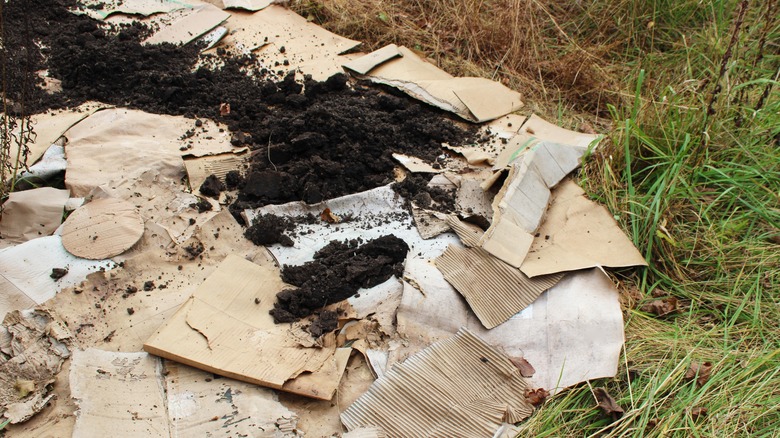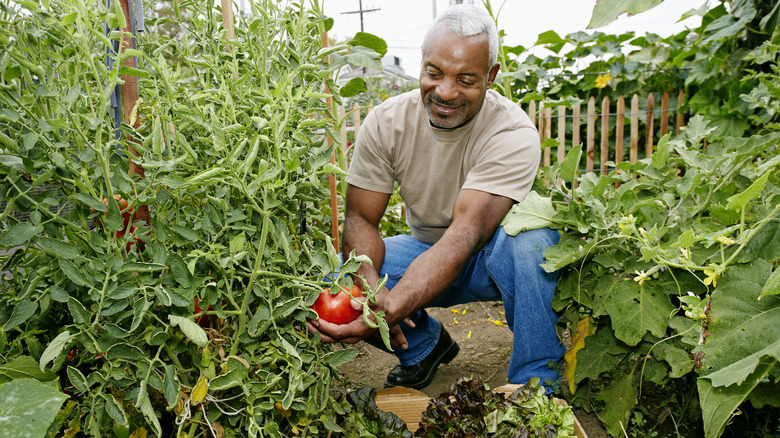Weeds Don't Stand A Chance Against This Simple Cardboard Box Hack
Weeds are the epitome of an unwanted guest. They take all your garden's nutritious goodness and hog the space from the plants you do want around. However, using herbicides with harsh chemicals to eliminate weeds can create more problems than solutions. So, skip the poisonous sprays and just use cardboard. In an exclusive interview, we spoke to Tiffany Selvey, the Master Gardener at House Digest, to find out how cardboard works to get rid of weeds in your garden.
"I love using cardboard in the garden to kill existing weeds and prevent more from growing," Selvey said. When used as sheet mulch, the paper material blocks the weeds' access to the natural resources it needs to thrive. It is a simple hack that won't put your crops or local pollinators in harm's way, but snuffs out the invasive plants. Selvey shared the advantages and disadvantages of using cardboard to control weeds and explained why this hack actually works. So don't feel guilty about the extra online packages coming to the door — it's for your garden.
Use cardboard as sheet mulch to control weeds
"Cardboard will break down over time, but it lasts long enough to suffocate weeds and keep seeds from germinating by preventing access to the sun," Tiffany Selvey exclusively told House Digest. It is a similar method to using landscaping fabric or a thick layer of mulch to suppress weeds. This hack is a smart way to repurpose cardboard boxes and eliminates the need to rake your garden beds or routinely spray any invading greenery.
"If you're overwhelmed with weeds, you can simply cut or tear plain brown boxes to fit your space and top it with something like mulch or rocks to hold them in place," Selvey said. Just remove any tape, staples, or labels from the cardboard and lay it on top of the weeds. Be mindful not to block any flowers and greenery you want to grow. It is best to use plain brown cardboard boxes. Dyed packaging is fine too, but avoid anything with a glossy coating. The shiny layer is typically made from plastic that won't break down into the soil. This hack is such a tried and true method that Selvey herself uses the technique. But there is one disadvantage to look out for.
Pros and cons of cardboard mulch
There are lots of advantages to using cardboard to control weeds in your garden. Tiffany Selvey exclusively told House Digest, "The beautiful thing about using cardboard to prevent weeds is there's almost no preparation required." Once the cardboard is free of tape and staples, it's ready to be your herbicide. It virtually comes at no cost either. You can repurpose shipping boxes you receive, and neighbors or local stores may also be willing to give you their empty boxes. Cardboard is also a compost ingredient you might already have at home and can be a great carbon nutrient for your plants. "Once the cardboard has completely broken down, you're left with loose, aerated soil," Selvey said.
Plus, while it controls weeds, it doesn't harm the plants or bugs you want around. "Not only does it not harm beneficial insects, but it attracts earthworms to the surface since they love the dark, cool environment this process creates," Selvey said. On the other hand, "The same cool, moist environment that attracts earthworms can also attract slugs and snails, which can damage young seedlings and the leaves of favorite plants like hostas." So while you'll want to keep an eye out for any slimy pests, this seems to be the only functional disadvantage. One might argue covering the soil with cardboard creates an eyesore, but with a layer of mulch, the paper product disappears and you're left with a beautiful, weed-free garden.


